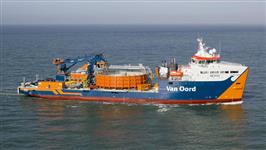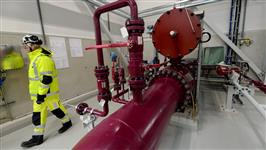
WindFloat Atlantic Becomes First-Ever Classed Offshore Wind Farm
Posted 16/07/2021 11:10
WindFloat Atlantic has become the world’s first classed offshore wind farm, after its three 8.4 MW floating turbines were accepted by the ABS Class Committee.
The three ABS-classed, semi-submersible floating foundations are designed by Principle Power and are housing MHI Vestas turbines which make a total of 25 MW of capacity.
WindFloat Atlantic, of which Ocean Winds is the majority shareholder, is continental Europe’s first larger-scale floating wind farm, located 20 kilometers off the coast of Viana do Castello, Portugal.
”It’s a historic first and, we believe, the first of many more to come. ABS has made a significant contribution both to this project and the development of offshore floating wind in Portugal. It underscores the potential of Class and industry working together for the safe adoption of new technologies. ABS has supported innovation in offshore energy since 1958. This landmark project underlines how we continue to support promising offshore technology more than 60 years later,” said Matt Tremblay, ABS Senior Vice President, Global Offshore.
The landmark is the latest step in a journey that began with the earliest days of floating wind in Portugal when ABS supported the development of the 2 MW WindFloat 1 that was installed in 2012.
The WindFloat Atlantic project is developed by the Windplus consortium, which is jointly owned by Ocean Winds (50:50 JV owned and created by EDP Renewables and ENGIE), Repsol, and Principle Power Inc.
”The WindFloat Atlantic project is again showing its technology reliability. Having achieved formal ABS classification for the three floating platforms is therefore an important milestone for the project shareholders and also for the offshore floating wind industry,” said Jose Pinheiro, Ocean Winds Southern Europe BU Country Manager.
Thanks to their floating foundations, floating offshore wind farms are not subject to the same depth restrictions as fixed structures and can be at any depth. With the development of larger turbines above 10 MW and research focused on shallow water moorings, the floating technology may even be an alternative to traditional bottom- fixed technologies in intermediate water depths in the future, ABS said.








